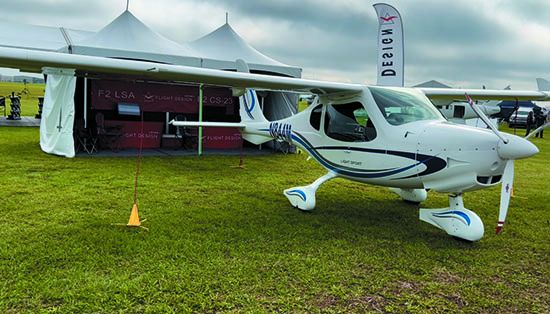As we’ve watched aircraft and fuel prices skyrocket amid a “hard” insurance market, we’ve been wondering whether those variables are conspiring to push prospective pilots to work for a sport pilot rating rather than the private ticket and whether current pilots are downsizing to light sport aircraft and taking advantage of the more liberal sport pilot medical regulations.
Frankly, we got mixed results from our queries to flight schools, insurance brokers and pilots who were flying light sport aircraft. Nevertheless, we came to the conclusion that the sport pilot regulations are quite popular because they are allowing a significant number of pilots to keep flying who would have otherwise hung up their goggles.
Flight schools told us that they are as busy as they have ever been but only a small proportion of their new student starts are seeking to get a sport pilot ticket—the vast majority are targeting the private certificate.
During our inquiries into the sport pilot world, we found that the majority of pilots taking advantage of the regulations are pilots who have a private or higher ticket and either didn’t want the hassle of meeting the requirements of an FAA medical or BasicMed and whose flying needs did not include carrying more than one passenger or cruising faster than 120 knots—the max speed for an LSA. Some bought new production S-LSAs, some went with the legacy production airplanes that met the LSA requirements such as a Cub, Champ or the single qualifying Ercoupe model—415 C—and some built an LSA from a kit.
WHAT IS AN LSA?
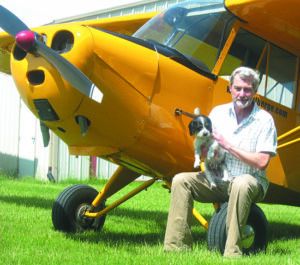
To be an LSA the aircraft may only have a max gross weight of 1320 pounds—1430 for seaplanes; a max stall speed of 45 knots; a max speed in level flight at full power (Vh) of 120 KCAS; a max of two seats; one engine; a fixed-pitch or ground-adjustable propeller; fixed landing gear—except for seaplanes and gliders; and an unpressurized cabin.
We note that if you’re looking at buying a legacy production aircraft that met the LSA rules for speed and weight when it left the factory but was subsequently modified to be outside the LSA limitations, you cannot change it back (unmodify it so to speak), to then fly it as an LSA. Once a legacy production airplane is modified into non-LSA compliance, it is forever on the outside looking in.
LSA TYPES
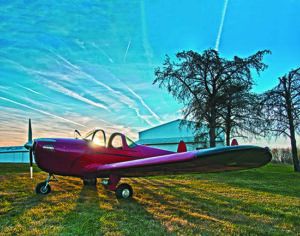
Beyond the legacy production aircraft that meet LSA standards, there are two types of LSAs: An S-LSA or Special Light Sport Aircraft is a factory-built aircraft that meets industry-developed “consensus standards” (not Federal Aviation Regulations) and has received a Special Airworthiness Certificate. It must be maintained in accordance with factory service instructions—making factory service letters mandatory, as if they were ADs issued by the FAA. It may not be modified without factory approval. The factory also dictates what maintenance may be done by the owner/pilot.
An S-LSA must have an annual “condition inspection” performed by either an A&P or a Light Sport Repairman-Maintenance (LSRM). A person can become eligible for an LSRM certificate by attending an 80- to 120-hour training course (length is dictated by the class of aircraft such as airplane or powered parachute). An S-LSA that is used to give flight training must also have 100-hour condition inspections.
A sport pilot may perform the preventive maintenance on an S-LSA that is authorized by the manufacturer’s maintenance manual. This is different from the preventive maintenance that may be conducted by a non-LSA aircraft by the owner under the FARs.
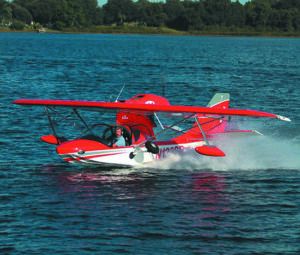
E-LSA
An E-LSA—Experimental Light Sport Aircraft—has been built from a kit. It may be modified by the owner. There are no requirements as to who may perform maintenance or modifications on an E-LSA. An S-LSA may be turned into an E-LSA by its owner, but then it can never again be an S-LSA unless it goes back to the factory and is converted by the factory to an S-LSA.
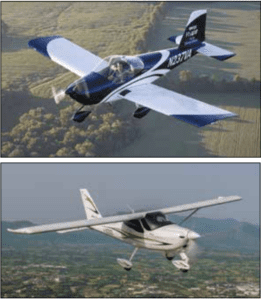
An E-LSA must have an annual “condition inspection” performed by an A&P, Light Sport Repairman-Maintenance or the owner as a Light Sport Repairman-Inspection (LSRI). An owner can become eligible for LSRI certification by attending a 16-hour training course. An LSRI can perform the annual condition inspection only on an E-LSA that she or he owns.
All LSAs are approved for day VFR operation. The factory determines whether its LSAs may be flown at night or IFR. Few S-LSAs are approved for IFR operations.
SPORT PILOT LIMITATIONS
For the pilot who has a recreational certificate or higher, choosing to operate as a sport pilot requires no logbook entry or flight test, just a willingness to comply with the FARs regarding privileges and limitations of the sport pilot. The pilot must have an FAA medical or a driver’s license (and comply with any restrictions on that license); have a current flight review (it does not have to have been taken in an LSA); fly a sport pilot-eligible aircraft; operate within the privileges and limitations of a sport pilot certificate; and operate within the category and class ratings on the pilot’s certificate.
To carry a passenger the pilot must have made three takeoffs and landings within the preceding 90 days.
If a pilot flying as a sport pilot is ramp checked, the pilot should present the pilot certificate and valid driver’s license and inform the FAA inspector, “I am operating as a sport pilot.”
FLIGHT LIMITATIONS
Operating as a sport pilot in an LSA you have a number of restrictions you did not have as a private (or higher) rated pilot. The can’t do’s include: carry more than one passenger; fly at night; fly above 10,000 feet MSL (or 2000 feet AGL, whichever is higher); when flight or surface visibility is less than 3 statute miles; without visual reference to the surface (you can’t fly above a cloud deck); IFR (even if you have an instrument rating and the LSA is approved for IFR ops); outside of the U.S.; in furtherance of a business; for compensation or higher (you can split costs with your passenger if you pay at least half); contrary to any operating limitation placed on the airworthiness certificate of the aircraft (flying over gross is therefore a violation of the FARs).
INSURANCE
We did not hear anyone state that they could not get insurance for a light sport aircraft. Some pilots we spoke with had decided to sell their fast retractable singles and buy a light sport airplane because, as they aged, they were either paying very high premiums or getting word from their brokers that they might not get renewed when the time came.
FLIGHT TRAINING
In the flight training world, we note that the Experimental Aviation Association (EAA) (www.eaa.org) is pushing the sport pilot rating hard and it has a database of instructors who are willing to give sport pilot instruction on its website. However, our perusal of that database showed that only about one in five instructors had a light sport aircraft available.
Our conversations with flight schools on the subject of sport pilot training revealed that they faced some common problems. First, when they put a light sport airplane on the line and put out the word that they were giving sport pilot training they had people show interest. Most were older men who did not think that they could pass an FAA medical and were excited that they could get a pilot rating if they had a driver’s license.
Unfortunately, most of those men also were heavy enough that the modest useful load of the LSA meant that there were no CFIs or examiners svelte enough to fly with them.
The second problem was cost. One of the flight schools in the Midwest that we spoke with used older 152s and 172s for training. The cost of a new LSA meant that its rental rate was as high or higher than the 172s and even though students, and regular renters, raved about the climb performance and handling of the LSA, as we’ll as the nice glass cockpit, they were not willing to pay the extra money to rent it on an ongoing basis.
Finally, we consistently heard that some LSAs would not hold up in the rough training environment.
One school told us that the stuff that broke was covered by warranty, but the warranty didn’t cover the money they lost with the extensive downtime.
We did hear positive comments about the Vashon and Tecnam S-LSAs for use as trainers. While the Sling is marketed as a trainer, some flight schools we talked with refuse to use sliding canopy trainers after their experience with renters putting dirty or wet feet on the seats, which beat up the interiors. Also, getting in or out in the rain means getting the interior wet.
TRAINING FROM SCRATCH
For the person who wants to go for a sport pilot certificate rather than a recreational or private ticket, the requirements are such that it looks pretty attractive—and the flying time counts should the sport pilot later wish to get a recreational, private, commercial or ATP certificate.
The minimum age is 17—16 for gliders and balloons. For airplanes, have 20 hours of flight time including 15 hours of dual and five solo; including two hours of cross-country flight training; 10 takeoffs and landings to a full stop at an airport; one solo cross-country of at least 75 nautical miles total distance with a full-stop landing at a minimum of two points and one segment of the flight at least 25 nautical miles between landing locations; and two hours of dual in preparation for the practical test. The applicant must also pass a written and practical test.
Once certificated the pilot has some limitations, notably flying in B, C and D airspace and speed of aircraft operated, but those can be removed following dual instruction and logbook entries.
CONCLUSION
We came away from our review of sport pilot operations in the real world of the opinion that they are an excellent way for pilots to keep flying for reasonable costs for some years after they might otherwise have had to stop.
We also feel that going for the sport pilot certificate initially is a viable way to learn to fly for a reasonable price and have a lot of fun in some very capable airplanes.

